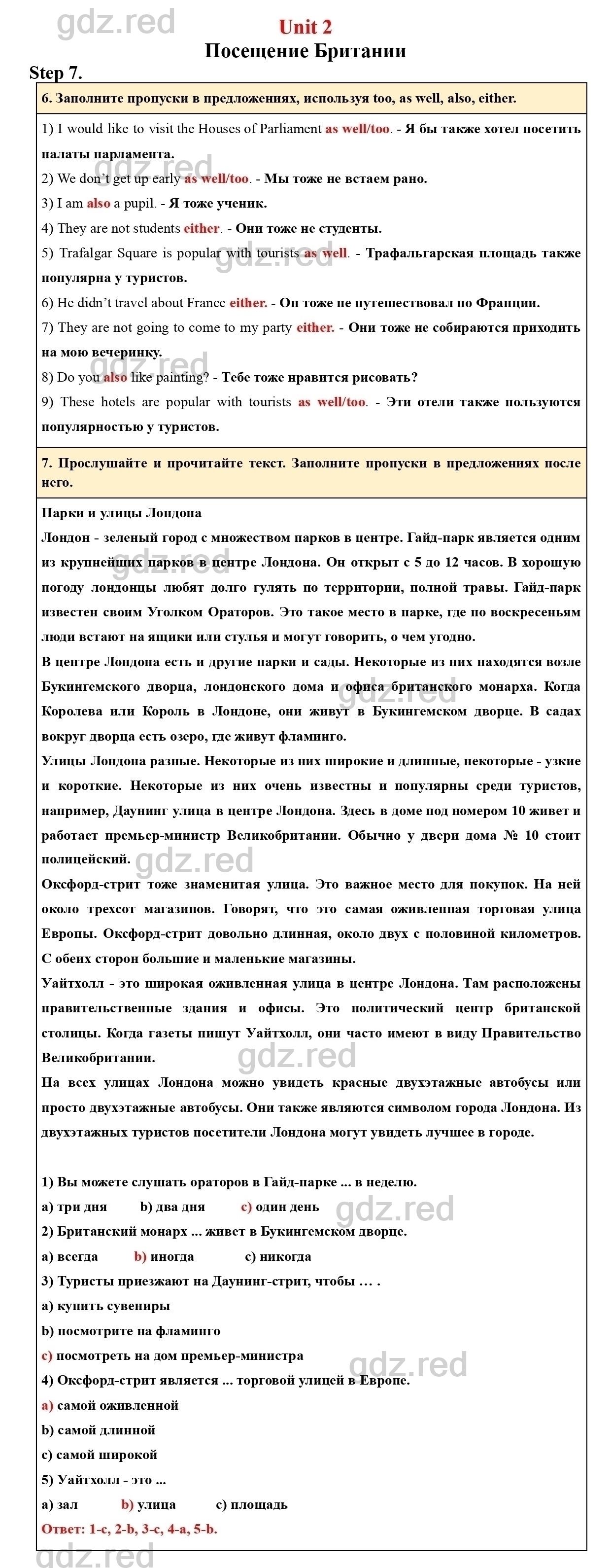Use too, as well, also, either to complete the sentences.
1) I would like to visit the Houses of Parliament … .
2) We don’t get up early … .
3) I am … a pupil.
4) They are not students … .
5) Trafalgar Square is popular with tourists … .
6) He didn’t travel about France … .
7) They are not going to come to my party … .
8) Do you … like painting?
9) These hotels are popular with tourists … .
Listen, CD(44), and read the text. Complete the sentences after it.
Parks and Streets of London
London is a green city with a lot of parks in its centre. Hyde Park is one of the largest parks in central London. It is open from 5 a.m. to 12 p.m. Londoners like to take long walks over its grassy territory in fine weather. Hyde Park is famous for its Speaker’s Corner1. It is the place in the park where on Sundays people stand up on boxes or chairs and speak of anything they want.
There are other parks and gardens in the centre of London as well. Some of them are near Buckingham Palace, the London home and office of the British monarch [ˈmɒnək]. When the Queen or the King is in London, they live in Buckingham Palace. The gardens around the palace have a lake where flamingos live.
London streets are different. Some of them are wide and long, some are narrow and short. Some of them are very famous and popular with tourists, for example Downing [ˈdaʊnɪŋ] Street in central London. Here at number 10 the British Prime Minister lives and works. There is usually a policeman outside the front door of Number 10.
Oxford Street is a famous street too. It is an important shopping place. There are about three hundred shops in it. They say it is the busiest shopping street in Europe. Oxford Street is fairly long, about two and a half kilometres. There are big and small shops on its both sides.
Whitehall is a wide busy street in central London. Government buildings and offices are situated there. It is the political centre of the British capital. When newspapers write Whitehall they often mean the British Government.
In all streets of London you can see red double−decker buses or just double−deckers. They are also a symbol [ˈsɪmbl] of the city of London. From the double−deckers visitors to London can see the best of the city.
1) You can listen to speakers in Hyde Park … of the week.
a) three days
b) two days
c) one day
2) The British monarch … lives in Buckingham Palace.
a) always
b) sometimes
c) never
3) Tourists come to Downing Street to … .
a) buy souvenirs
b) look at the flamingos
c) look at the Prime Minister’s House
4) Oxford Street is the … shopping street in Europe.
a) busiest
b) longest
c) widest
5) Whitehall is a … .
a) hall
b) street
c) square
Выберите страницу
Выберите страницу


